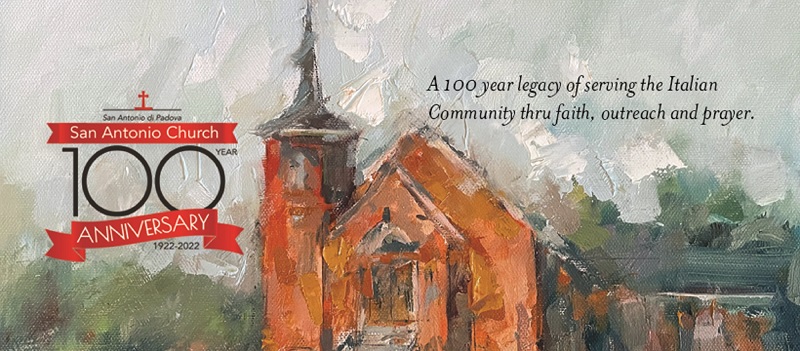We would like to thank everyone who has continued to contribute to the ongoing expenses of San Antonio Church by mailing in their weekly envelopes or by contributing electronically utilizing WeShare . The buttons at the bottom of this post allow you to make online donations directly to the listed account for San Antonio Church.
Weekly Bulletin October 16, 2022
by Terrie Evans
On this 29th Sunday in Ordinary Time, we celebrate the fest days of St. Margaret Mary Alacoque a nun who advocated for the devotion of the Sacred Heart of Jesus and St. Hedwig, a German Duchess who dedicated her life to the poor, orphans, and widows. St. Margaret Mary was born in France who at a young age became committed to the Blessed Sacrament. After making her First Holy Communion, she became bedridden for 4 years all the time praying to the Blessed Mother for a full recovery from the rheumatic fever that ravaged her body. She never lost her devotion to the Blessed Virgin Mary and by the age of 24, she entered the Visitation Convent in France on May 25, 1671. She took her vows in 1672 and started receiving revelations of the Sacred Heart first in 1673 and in 1675.
In these revelations the Sacred Heart asked her to receive Holy Communion on the 1st Friday of every month, attend Adoration of the Holy Eucharist every Thursday, and always celebrate the Feast of The Sacred Heart. Mary Margaret went on to promote observance of the Feast of the Sacred Heart to her Mother Superiors and to King Louis XIV who she asked to consecrate the nation of France to the Sacred Heart in 1689. They both declined, but it was not until after her death that the Jesuits advanced her cause with her writings on the Devotion to the Sacred Heart, published in 1698 are now used extensively by Catholics. St. Margaret Mary died on October 17, 1690, at age 43 and in 1824 was declared Venerable by Pope Leo XII and when her tomb was opened in 1830, two people were cured of their afflictions.
On September 18, 1864, St. Margaret Mary Alacoque was Beatified by Pope Pius IX and 56 years later in 1920, she was Canonized by Pope Benedict XV. She is the Patron saint of Polio Patients and Devotees of the Sacred Heart. Her incorrupt body is preserved in the Chapel of the Apparitions within the Visitation Monastery in France where pilgrims from all over the world have journeyed and reported many miracles attributed to her.
On this Sunday we also honor St. Hedwig (1174-1243) who is considered the Patron saint of the Republic of Poland, Brandenburg, and Berlin Germany. She grew up at the Andechs Castle in Bavaria with siblings Agnes, Gertrude (Mother of St. Elizabeth of Hungary) Matilda, Bishop Ekbert of Bamberg, Archbishop Berthold of Kalocsa, and Henry, Margrave (Medieval Title for a Military Commander) of Istria. As a young teen, Hedwig married eighteen-year-old Henry I, high Duke of Krakow, they welcomed 7 children. After their last child was born the couple vowed to promote and facilitate the Growth of Christianity in Germany, Poland and throughout parts of Europe.
In 1202, Hedwig and Henry built the Trzebnica Abbey, a Cisteercian Convent for Nuns. When Henry I died in 1238, he was buried at the Abbey and Hedwig would later enter the convent to become a Lay Sister who would invite friends from all over Europe to till the lands around the Abbey establishing many villages, towns, and cities. St. Hedwig and Henry helped found many convents, monasteries, hospitals, and Churches while living a very religious life promoting their Christian Faith. St. Hedwig, Duchess of Silesia, and Poland died in in 1243 and was Canonized by Pope Clement IV on March 26, 1267. She once said “Would you oppose the will of God? Our lives are His.”
This Sunday is also the conclusion of Sukkot, the 7-day Jewish Festival known as the Feast of Tabernacles and the Festival of Booths. For this observance, a sukkah will be constructed with walls of wood, canvas, or sheets to be free standing or on the sides of a building or porch. The sukkah will be decorated with hanging decorations and artwork and will serve as shelters to resemble those that were built in the fields at harvest time. It is used for daily prayers from the Torah, meals and some even sleep in the sukkah during this 7-day festival. It is like harvest festivals and marks the end of harvest time and the end of the agricultural year in the Land of Israel. It is also intended to recall the type of fragile dwellings the Israelites used during their 40-year journey in the desert after their Exodus from slavery in Egypt. It is also celebrated by Christian denominations that observe holidays from the Old Testament who base the festival on the fact that Jesus celebrated Sukkot in the Gospel of John 7. The holiday by Christian Groups dates to the 17th century.
